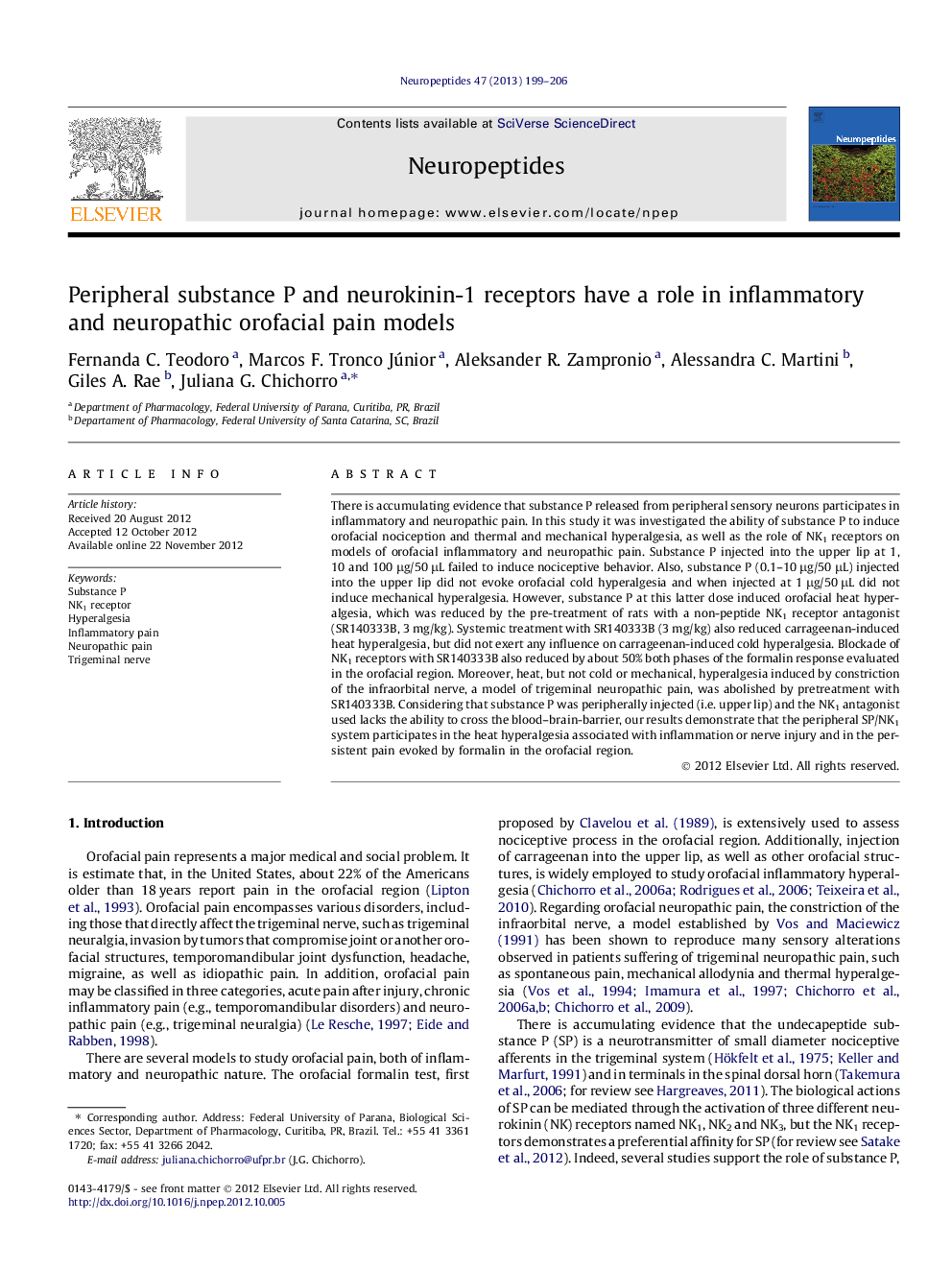| Article ID | Journal | Published Year | Pages | File Type |
|---|---|---|---|---|
| 5904291 | Neuropeptides | 2013 | 8 Pages |
Abstract
There is accumulating evidence that substance P released from peripheral sensory neurons participates in inflammatory and neuropathic pain. In this study it was investigated the ability of substance P to induce orofacial nociception and thermal and mechanical hyperalgesia, as well as the role of NK1 receptors on models of orofacial inflammatory and neuropathic pain. Substance P injected into the upper lip at 1, 10 and 100 μg/50 μL failed to induce nociceptive behavior. Also, substance P (0.1-10 μg/50 μL) injected into the upper lip did not evoke orofacial cold hyperalgesia and when injected at 1 μg/50 μL did not induce mechanical hyperalgesia. However, substance P at this latter dose induced orofacial heat hyperalgesia, which was reduced by the pre-treatment of rats with a non-peptide NK1 receptor antagonist (SR140333B, 3 mg/kg). Systemic treatment with SR140333B (3 mg/kg) also reduced carrageenan-induced heat hyperalgesia, but did not exert any influence on carrageenan-induced cold hyperalgesia. Blockade of NK1 receptors with SR140333B also reduced by about 50% both phases of the formalin response evaluated in the orofacial region. Moreover, heat, but not cold or mechanical, hyperalgesia induced by constriction of the infraorbital nerve, a model of trigeminal neuropathic pain, was abolished by pretreatment with SR140333B. Considering that substance P was peripherally injected (i.e. upper lip) and the NK1 antagonist used lacks the ability to cross the blood-brain-barrier, our results demonstrate that the peripheral SP/NK1 system participates in the heat hyperalgesia associated with inflammation or nerve injury and in the persistent pain evoked by formalin in the orofacial region.
Related Topics
Life Sciences
Biochemistry, Genetics and Molecular Biology
Endocrinology
Authors
Fernanda C. Teodoro, Marcos F. Tronco Júnior, Aleksander R. Zampronio, Alessandra C. Martini, Giles A. Rae, Juliana G. Chichorro,
